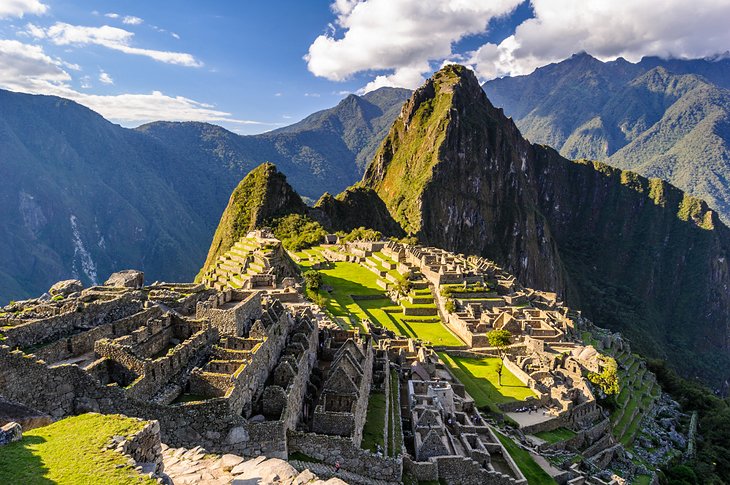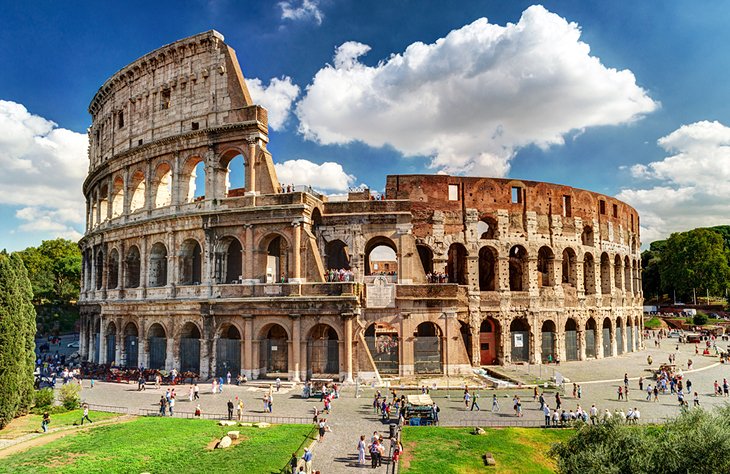For centuries, or even millenniums, some of the most astounding sites of ancient times were forgotten or hidden from the world, buried under jungles, deserts, or farmers' fields around the globe. Rumours of lost cities or chance discoveries by people going about their everyday lives have led to unimaginable finds that are today open for the world to see. Some great sites have been around and attracting tourists for hundreds of years and are as fascinating now as they were ages ago. It may be a cliché to say there has never been a better time to explore the greatest sites on the planet, but it is also true.
1 Machu Picchu, Peru

Machu Picchu, Peru
Built in lush, mountainous terrain high above the Urubamba River, Machu Picchu lies in one of the most stunning settings of any archeological site in the world. This ancient city of Incas cascades down steep walls on each side of the mountain, with terraced steps that disappear over cliff edges into the valley below. These incredible ruins have been restored and are well maintained, giving visitors a good indication of what the city might have looked like when it was occupied during the 15th and 16th centuries.
Many people come to Peru for the sole purpose of visiting Machu Picchu, and the journey to the ruins can be an adventure in and of itself, depending on how travelers choose to reach the site. Adventurous souls can opt for a guided, multi-day hike and camping trip along the famous Inca Trail to reach the site, or choose the easier option of accessing the ruins by bus from the small town of Aguas Calientes at the base of the hill, which most visitors get to by train from Cusco or the Sacred Valley.
2 Pyramids, Egypt Many people come to Peru for the sole purpose of visiting Machu Picchu, and the journey to the ruins can be an adventure in and of itself, depending on how travelers choose to reach the site. Adventurous souls can opt for a guided, multi-day hike and camping trip along the famous Inca Trail to reach the site, or choose the easier option of accessing the ruins by bus from the small town of Aguas Calientes at the base of the hill, which most visitors get to by train from Cusco or the Sacred Valley.

Pyramids, Egypt
One of the most iconic sites in the world, the Pyramids of Giza, just outside Cairo, are a surreal sight rising from the barren desert landscape. Standing guard nearby, and almost as impressive, is the Sphinx, gazing blankly out over the land. The pyramids were built as tombs for the Pharaohs, the largest of which was constructed between 2560 and 2540 BC. To put their age in perspective, they were already more than 2,600 years old when the Colosseum in Rome was being built. Today, these giant monuments are the sole surviving member of the Seven Wonders of the Ancient World.

Bagan, Myanmar
4 Angkor Wat, Cambodia

Angkor Wat, Cambodia
In a unique jungle setting, not far from the city of Siem Reap, Angkor Wat is known for being the world's largest religious monument, but it is more than sheer size that makes this complex so interesting. The site was built by the Khmers in the 12th century, and the architecture is nothing less than stunning. The site has an intriguing mix of excavated and unexcavated temples in varying shapes, sizes, and states of decay, with some buildings taking on a mystical appearance as they're swallowed up by trees and roots. Huge stone carved faces peer out in all directions. Extensive and intricate bas-reliefs line the walls and doorways. Crumbling passageways and steep stone stairs call out for exploration. Before its fall in the 15th century, Angkor Wat was the largest city in the world. The complex is huge, and visitors may want to spend a couple of days taking in the site.
5 Great Wall of China

Great Wall of China
Stretching almost 6,000 kilometers as it snakes its way through forests and mountains, the Great Wall of China is one of those undeniable bucket list sites that have long inspired great adventures. This massive wall, connecting battlements and watchtowers, was built over the centuries, with the oldest sections dating back to the 7th century BC. Today, visitors can opt to simply visit the wall on a day trip from places like Beijing, or tackle whole sections of it on organized, multi-day trips. Some sections of the wall have been restored, while other sections are badly in need of repair.
6 Roman Colosseum, Italy

Roman Colosseum, Italy
One of the most recognizable structures in the world, the Roman Colosseum is the largest building remaining from Roman times. Its imposing presence in the city center of modern day Rome is a testament to the incredible history of the city and the achievements of the Roman Empire. Visitors popping up from the nearest subway stop or turning a corner and seeing it for the first time can't help but be stunned by its immense presence. Construction began on the structure in 72 AD and today, it is still one of the greatest tourist attractions in the world.
7 Acropolis, Greece

Acropolis, Greece
Towering over the city of Athens from its hilltop perch, the Acropolis stands as a proud monument to Ancient Greece. Dating from between the 5th and 4th century BC and dominating the site, the Parthenon is the largest and most recognizable structure from this period and symbolizes the extensive history of this country. Just steps away from modern day Athens, the Acropolis is a powerful sight, glistening in the Mediterranean sun during the day and lit for dramatic effect at night. For first time visitors to the city, it is an awe inspiring sight and sets the stage for travelers carrying on to other parts of Greece.
8 Stonehenge, England

Stonehenge, England
Source: http://www.planetware.com/world/top-world-heritage-sites-per-1-2.htm







0 comments:
Post a Comment